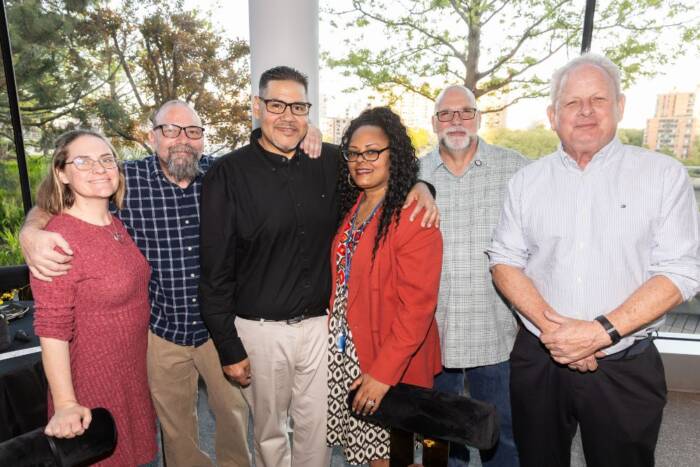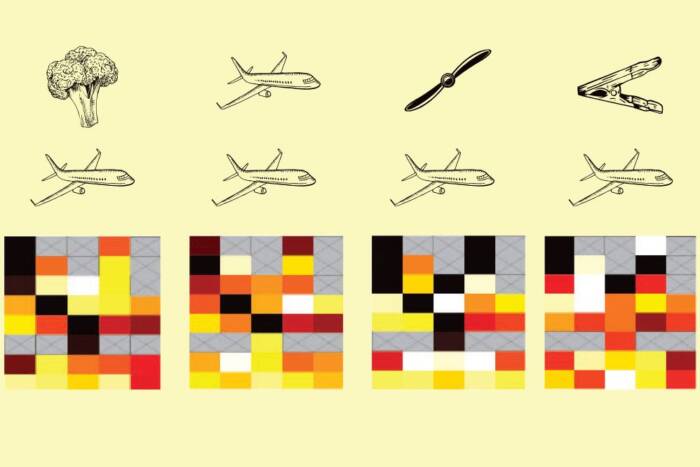Shai Shaham and Sean Brady receive promotions
Two Rockefeller faculty members have received promotions, both of which were approved by the Board at its June 7 meeting. Shai Shaham(opens in new window), head of the Laboratory of Developmental Genetics(opens in new window) at The Rockefeller University, has been awarded tenure and promoted to professor; Sean Brady, head of the Laboratory of Genetically Encoded Small Molecules, has been promoted to associate professor.
The Shaham lab uses the nematode Caenorhabditis elegans as a model for two main areas of research: the control of programmed cell death during animal development and the roles of glial cells in nervous system development and function. In addition to discovering a number of mechanisms that regulate apoptotic cell death, in 2007 the lab identified a novel, nonapoptotic cell death program that has features conserved across organisms, including vertebrates. An article(opens in new window) published this year in Science pinpointed a gene involved in the new cell death program that may also be linked to certain neurodegenerative diseases such as Huntington’s.
“Our goal now is to understand how this program works molecularly: what genes are involved, how they talk to each other and to what extent they are conserved in other vertebrate systems,” says Shaham. In addition to its possible practical applications, this discovery has been especially gratifying for Shaham simply because it is a newly described phenomenon. “Apoptosis is the type of cell death on which researchers primarily focus. It is, therefore, exciting to discover a new program that may be similarly conserved.”
The Shaham lab has also been adding new insights to the topic of glial cells, highly abundant nervous system cells that have historically been less explored than neurons. Glia were thought to function solely as the workhorses that brought nutrients to and cleaned up after neurons, but the Shaham lab has shown that glia are essential for neural development, promoting axon outgrowth and dendrite extension. The lab has also uncovered morphology-independent roles for glia in sensory neuron function, showing that animals lacking glia exhibit profound sensory deficits. Recent research has centered on the communication between glia and neurons at the synapse, and the role of glia in regulating the function of synaptic receptors.
Shaham, who was born in Israel, received his A.B. degree in biochemistry and a minor in mathematics from Columbia University in 1989. At the Massachusetts Institute of Technology he studied apoptotic cell death in the lab of Robert Horvitz and graduated with a Ph.D. in biology in 1995. After postdoctoral studies at the University of California, San Francisco, with Ira Herskowitz and Cori Bargmann, Shaham was hired at Rockefeller as assistant professor in 2001, and promoted to associate professor in 2007.
In 2010 Shaham received an NIH Director’s Transformative Research Award and in 2009 he won a Blavatnik Award for Young Scientists, a highly-regarded award for early-career researchers. He also received a Klingenstein Fellowship Award in the Neurosciences and a Breast Cancer Alliance Masin Young Investigator Award, and was named a scholar of both the Rita Allen Foundation and the Sidney Kimmel Foundation for Cancer Research.
Sean Brady, who joined the university in 2006, is interested in the discovery of new genetically encoded small molecules from bacterial sources, chemicals that may be useful for the study of life or that may play a role in the development of new pharmaceuticals. Since launching his laboratory six years ago, Brady and his collaborators have shown that it is possible to use uncultured bacteria – principally bacteria harvested from soil – as a source of new small molecules, and that these molecules are biologically active.
“There’s a lot of chemistry in these bacteria, but because they cannot be grown in the laboratory, much of it has been inaccessible,” says Brady. “We’ve worked to develop tools that allow us to characterize and evaluate the natural products produced by a wide range of unstudied bacteria, and we’re now focused on screening for natural products that are the most relevant.” Because uncultured bacteria vastly outnumber their cultured counterparts, they represent one of the largest remaining pools of unexplored genetic diversity, and the chemicals they produce could potentially be the basis for new antibiotics, anti-fungal agents or anti-cancer drugs, to name a few.
“Rather than approach nature with specific problems to solve, we’re taking the opposite approach: asking what solutions it has come up with that might be useful for humans,” Brady says.
In addition to its work with uncultured bacteria, the lab also has recently begun to use techniques it has developed to try to better understand the role that small molecules play in pathogenic bacteria. By studying the genetics behind the complex collections of small molecules used by bacterial pathogens to initiate and sustain infections, they hope to identify new mechanisms by which the process can be disrupted.
Brady graduated with a degree in molecular biology from Pomona College in 1993. He received his Ph.D. in organic chemistry in 2001 from Cornell University, where he studied under Jon Clardy. He was at Harvard Medical School before joining Rockefeller. Brady is an early career scientist at the Howard Hughes Medical Institute and has been named a Searle Scholar, an Irma T. Hirschl Scholar, an Alexandrine and Alexander L. Sinsheimer Scholar and an Arnold and Mabel Beckham Young Investigator.




